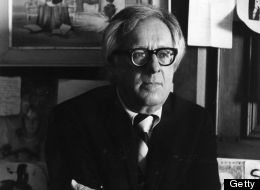
WASHINGTON -- The published exit poll
points to a reasonably clear explanation for how Scott Walker prevailed
in the Wisconsin recall election. Walker held much of the vote he
received in 2010, and while Democratic challenger Tom Barrett prevailed
narrowly among the new voters, it was not enough to overcome Walker's
support.
The final unofficial turnout (2.5 million) exceeded the 2.16 million who voted in the 2010 race that elected Walker as governor, but fell short of the 2.98 million that gave President Barack Obama a 14-point victory in the state in 2008.
The exit poll, conducted by Edison Research for the National Election Pool consortium, shows that 13 percent of the 2012 voters did not participate in 2010, and they favored Barrett by a 53 percent to 45 percent margin. That result was positive for Barrett. Unfortunately, these self-reports also imply that Walker did a better job than Barrett of turning out 2010 supporters. Those who voted this year reported supporting Walker in 2010 by a larger margin (47 percent to 34 percent) than Walker actually enjoyed. According to the exit polls, both candidates held over 94 percent of their 2010 vote.
Consistent with that turnout pattern, the percentage of the 2012 voters who identified as conservative (36 percent) fell slightly short of the levels of the 2010 election (37 percent), but ran ahead of what voters reported in 2008 (31 percent) and 2006 (26 percent).
The recall was often framed by both sides as a battle between Walker and Wisconsin's labor unions, but those lines were somewhat blurred on voting day. Walker won 38 percent of the vote among members of union households, exit polling shows, roughly reflecting the partisan breakdown among union members.
Those numbers are nearly identical to 2010, when Walker won among 37 percent of union household members in his race against Barrett for governor. Walker's foes had hoped that number would shrink. "If that doesn't change, then congratulations, they will have formed their own suicide squad," former Rep. David Obey (D-Wis.) told the Milwaukee Journal-Sentin
The final unofficial turnout (2.5 million) exceeded the 2.16 million who voted in the 2010 race that elected Walker as governor, but fell short of the 2.98 million that gave President Barack Obama a 14-point victory in the state in 2008.
The exit poll, conducted by Edison Research for the National Election Pool consortium, shows that 13 percent of the 2012 voters did not participate in 2010, and they favored Barrett by a 53 percent to 45 percent margin. That result was positive for Barrett. Unfortunately, these self-reports also imply that Walker did a better job than Barrett of turning out 2010 supporters. Those who voted this year reported supporting Walker in 2010 by a larger margin (47 percent to 34 percent) than Walker actually enjoyed. According to the exit polls, both candidates held over 94 percent of their 2010 vote.
Consistent with that turnout pattern, the percentage of the 2012 voters who identified as conservative (36 percent) fell slightly short of the levels of the 2010 election (37 percent), but ran ahead of what voters reported in 2008 (31 percent) and 2006 (26 percent).
The recall was often framed by both sides as a battle between Walker and Wisconsin's labor unions, but those lines were somewhat blurred on voting day. Walker won 38 percent of the vote among members of union households, exit polling shows, roughly reflecting the partisan breakdown among union members.
Those numbers are nearly identical to 2010, when Walker won among 37 percent of union household members in his race against Barrett for governor. Walker's foes had hoped that number would shrink. "If that doesn't change, then congratulations, they will have formed their own suicide squad," former Rep. David Obey (D-Wis.) told the Milwaukee Journal-Sentin


